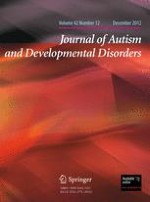01-12-2012 | Original Paper
Daytime Secretion of Salivary Cortisol and Alpha-Amylase in Preschool-Aged Children with Autism and Typically Developing Children
Gepubliceerd in: Journal of Autism and Developmental Disorders | Uitgave 12/2012
Log in om toegang te krijgenAbstract
We examined daytime salivary cortisol and salivary alpha-amylase (sAA) secretion levels and variability in preschool-aged children with autism (AUT) and typically developing children (TYP). Fifty-two subjects (26 AUT and 26 TYP) were enrolled. Salivary samples were obtained at waking, midday, and bedtime on two consecutive days at three phases (baseline, 3 months later, 6 months later). There were modest increases in waking cortisol and sAA levels in AUT relative to TYP, but the increases were not statistically significant. Important differences were observed in cortisol and sAA variability between AUT and TYP. There was also a graded response among AUT by functional status—cortisol and sAA secretion levels were higher when IQ was lower.
